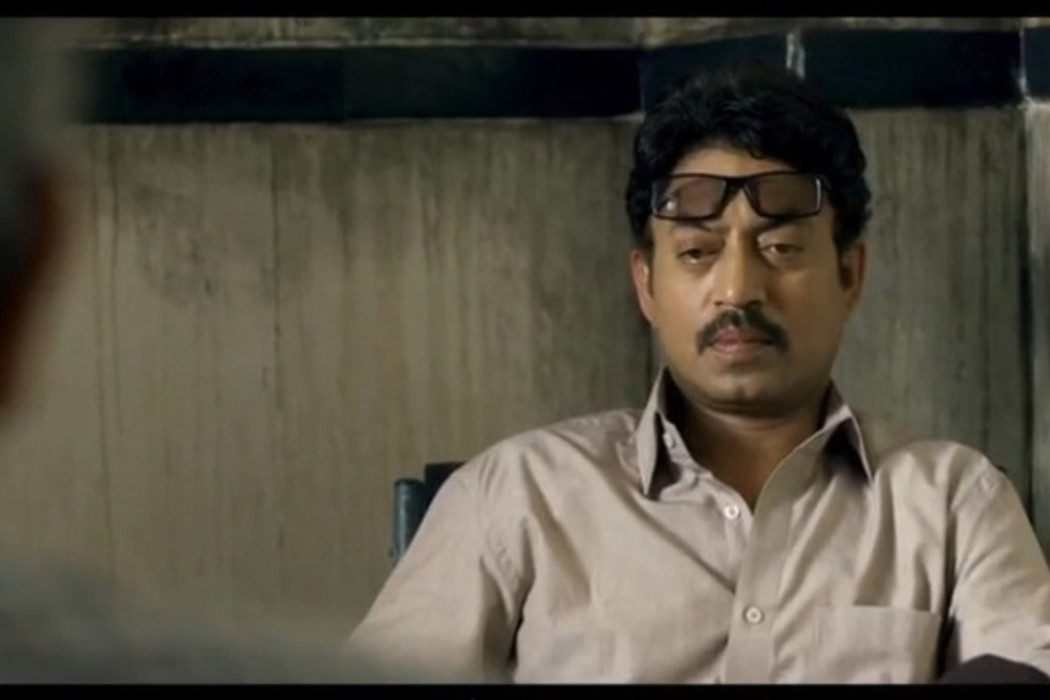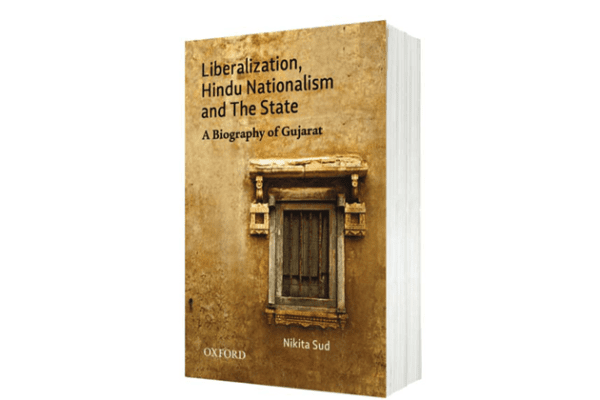Meghna Gulzar’s ‘Talvar’ is a mature, incisive and revealing look at our society at its ugliest.

Talvar
Director: Meghna Gulzar
Starring: Irrfan Khan, Konkona Sen Sharma, Neeraj Kabi, Tabu
Rating: 3.5/5
“The Aarushi case has been battering our rawest nerve endings for almost three years now. First it riveted the nation with successive sensational discoveries: Teenager killed, servant suspected! No, servant also killed, father suspected! Honour killing! Class rage! Sexual perversion! UP police useless! CBI team brilliant! CBI team useless! CBI’s second team replaces the first team! Then, as the case spluttered on and on, we stopped paying attention. We took more and more of what the CBI announced and the media pronounced on face value. So that by now, everyone has an opinion. Everyone is convinced. Everyone ‘knows’ things. Everyone has ‘heard’. After all, if the chatterers have chattered on for so long, some of it must be true?”
—Gaurav Jain, ‘The House We Blew Down’
The title of Meghna Gulzar’s Talvar is a clever workaround of whatever legal restrictions prohibited the filmmakers from using real names in this dramatisation of the Noida double murders. In the film, Aarushi Talwar is Shruti Tandon—a subversive choice of name in itself; ‘Shruti’ was what IG Gurdarshan Singh repeatedly called her in that travesty of a press conference, where a senior policeman speculated about the promiscuity of a dead teenager without bothering to get her name right—Hemraj is Khempal, and so on. The title serves a dual purpose: it gets across the film’s subject to the casual viewer, as well as providing a splendid metaphor for the criminal justice system in our country.
Said metaphor comes just before the intermission, as Ashwin Kumar (Khan) and his boss, played by Prakash Belawadi, drink hooch in a momo shop and discuss the case. Have you ever noticed, Belawadi’s character says, that the statue of justice carries a sword along with the more famous scales? We are the sword, he says, referring to the CDI, the film’s stand-in for the CBI. The problem is that the sword has gathered rust.
It is how well Talvar plays out that metaphor on screen that makes it such an important film. This year has seen much interest in the double murders, with Avirook Sen’s book about the case being released a few months ago. While it received its fair share of praise for exposing the various lacunae in the investigation, it did elicit concerns about the author’s objectivity—the narrative seemed to implicitly trust the Talwars’ version of events; the difference in tone when talking about people who supported their version as opposed to those who didn’t was palpable.
Society’s voyeurism, and morbid fascination with true crime—by no means unique to our society—meant that everyone devoured fresh details of the crime as they were revealed by an equally obsessed media. Everyone loved to play detective and develop their own theories over who did it, and how.
Sen’s apparent partiality was by no means unique. As Ellen Barry, South Asia bureau chief for The New York Times, wrote in her review:
Why does he take their word for it? He just does.
But this was always the problem with the Talwar case.
In the absence of key pieces of evidence, such as a murder weapon, everyone simply fell back on their natural sympathies. If your children went to schools like the one Aarushi did, it was easy enough to see her as an ordinary teenager, and to sympathize with parents pilloried by an irresponsible press. If you were, like the judge in the case, a farmer’s son, the kind who boasted that he had only watched a handful of movies in his life, their family life in Noida might strike you as distant and alien, slipped from its moral moorings.
Society’s voyeurism, and morbid fascination with true crime—by no means unique to our society—meant that everyone devoured fresh details of the crime as they were revealed by an equally obsessed media. Everyone loved to play detective and develop their own theories over who did it, and how. It didn’t matter that much of this conjecture was based on gut feelings rather than hard evidence, or that many of these theories involved speculating about the private life of a child they didn’t know.
Then, as Gaurav Jain wrote in his 2011 Tehelka article, like with all media trials, we stopped paying attention. But it didn’t mean that the case disappeared. It still had to be solved. Trouble was, it was too late; an unbelievably shoddy first investigation and various bureaucratic foul-ups along the way meant that most of the physical evidence was either lost or unusable.
While watching one of the media reconstructions of the murder being parodied in Talvar, I was reminded of an article about Kishalay Bhattacharjee’s new book Blood On My Hands: Confessions of Staged Encounters. At the book’s launch, Bhattacharjee, a senior journalist, “admitted more than once that he had reported many of these staged encounters when they had taken place—and had got almost all of them wrong. Simply because he had bought in the ‘official’ version—the Army’s version—and the hectic news cycle never let him scratch beyond the surface.”
Whether it is fake encounters, or arrests in terror cases, or high-profile crimes, the media is often too willing to take the official version at face value. This is part of the rust that has accumulated on the sword of justice—the wasting away of the investigative instincts of the police. After all, it is far easier to do what the police does in so many such cases; the public wants to play detective, all the detectives have to do is play Agatha Christie. Instead of painstakingly collecting evidence and using it to come up with a theory, it is so much simpler to invent a conclusion and then find the facts that support it. All you need to do is leak said theory to the media and watch them try to outdo each other in getting the public on board. The more grisly details, the better.
That is what happened in the Aarushi-Hemraj case. The question of the parents’ guilt isn’t one that can be settled by simply looking at the evidence available. There are two theories, put forward by two investigative teams, neither of which is foolproof. What is indisputable is that the evidence used to lock the Talwars away, and the manner in which the case against them was made, is wholly at odds with what due process should look like.
Instead of painstakingly collecting evidence and using it to come up with a theory, it is so much simpler to invent a conclusion and then find the facts that support it. All you need to do is leak said theory to the media and watch them try to outdo each other in getting the public on board. The more grisly details, the better.
Talvar finds an excellent way to demonstrate how this probably took place. One of the climactic scenes has the two investigative teams sitting around a table, pitching their theories to the home secretary, rebutting each other in an almost sophomoric manner. The ultimate verdict doesn’t depend so much on its fidelity, but in the likelihood that it would stand up in a court of law. After all, the important thing isn’t that justice is served, but that closure is achieved. (For once, this instinct was suppressed and the investigators were directed to close the case, but their closure report was so damning of the Talwars without actually charging them that the judge refused to accept it as such.)
Unlike Avirook Sen’s book, Meghna Gulzar’s film manages to describe the miscarriage of justice without seeming like an outright defence of the Talwars. It rarely strays from fact and illustrates both theories in Rashomon-like flashbacks, never saying outright that either of them is true or commenting on intangibles such as the dynamics within the Tandon/Talwar family. Aided by a strong performance by Khan, and Neeraj Kabi and Konkona Sen Sharma’s understated, ambiguous portrayal of the Talwars, it is a mature, incisive and revealing look at our society at its ugliest.














